DeWalt d25899k Handleiding
DeWalt
Boormachine
d25899k
Bekijk gratis de handleiding van DeWalt d25899k (7 pagina’s), behorend tot de categorie Boormachine. Deze gids werd als nuttig beoordeeld door 69 mensen en kreeg gemiddeld 4.3 sterren uit 35 reviews. Heb je een vraag over DeWalt d25899k of wil je andere gebruikers van dit product iets vragen? Stel een vraag
Pagina 1/7

INSTRUCTION MANUAL
GUIDE D'UTILISATION
MANUAL DE INSTRUCCIONES
INSTRUCTIVO DE OPERACIÓN, CENTROS DE SERVICIO Y PÓLIZA
DE GARANTÍA. ADVERTENCIA: LÉASE ESTE INSTRUCTIVO ANTES
DE USAR EL PRODUCTO.
DEWALT Industrial Tool Co., 701 Joppa Road, Baltimore, MD 21286
(JAN08) Part No. 1006463-02 D25899, D25901, D25941 Copyright © 2008 DEWALT
The following are trademarks for one or more DEWALT power tools: the yellow and black color scheme;
the “D” shaped air intake grill; the array of pyramids on the handgrip; the kit box configuration; and the
array of lozenge-shaped humps on the surface of the tool.
D25899, D25901, D25941
Demolition Hammer
Marteau de démolition
Martillos para demolición
If you have questions or comments, contact us.
Pour toute question ou tout commentaire, nous contacter.
Si tiene dudas o comentarios, contáctenos.
1-800-4-D WALT • www.dewalt.comE
Definitions: Safety Guidelines
The definitions below describe the level of severity for each signal word. Please read the
manual and pay attention to these symbols.
DANGER: Indicates an imminently hazardous situation which, if not avoided, result will
in death or serious injury.
WARNING: could Indicates a potentially hazardous situation which, if not avoided,
result in death or serious injury.
CAUTION: may Indicates a potentially hazardous situation which, if not avoided, result
in minor or moderate injury.
CAUTION: Used without the safety alert symbol indicates a potentially hazardous situation
which, if not avoided, may result in property damage.
IF YOU HAVE ANY QUESTIONS OR COMMENTS ABOUT THIS OR ANY DEWALT TOOL,
CALL US TOLL FREE AT: 1-800-4-DEWALT (1-800-433-9258).
WARNING: To reduce the risk of injury, read the instruction manual.
General Power Tool Safety Warnings
WARNING! Read all safety warnings and instructions Failure to follow the warnings and
instructions may result in electric shock, fire and/or serious injury.
SAVE ALL WARNINGS AND INSTRUCTIONS
FOR FUTURE REFERENCE
The term “power tool” in the warnings refers to your mains-operated (corded) power tool or
battery-operated (cordless) power tool.
1) WORK AREA SAFETY
a) Keep work area clean and well lit. Cluttered or dark areas invite accidents.
b) Do not operate power tools in explosive atmospheres, such as in the presence of
flammable liquids, gases or dust. Power tools create sparks which may ignite the dust or
fumes.
c) Keep children and bystanders away while operating a power tool. Distractions can
cause you to lose control.
2) ELECTRICAL SAFETY
a) Power tool plugs must match the outlet. Never modify the plug in any way. Do not
use any adapter plugs with earthed (grounded) power tools. Unmodified plugs and
matching outlets will reduce risk of electric shock.
b) Avoid body contact with earthed or grounded surfaces such as pipes, radiators,
ranges and refrigerators. There is an increased risk of electric shock if your body is
earthed or grounded.
c) Do not expose power tools to rain or wet conditions. Water entering a power tool will
increase the risk of electric shock.
d) Do not abuse the cord. Never use the cord for carrying, pulling or unplugging the
power tool. Keep cord away from heat, oil, sharp edges or moving parts. Damaged or
entangled cords increase the risk of electric shock.
e) When operating a power tool outdoors, use an extension cord suitable for outdoor
use. Use of a cord suitable for outdoor use reduces the risk of electric shock.
f) If operating a power tool in a damp location is unavoidable, use a residual current
device (RCD) protected supply. Use of an RCD reduces the risk of electric shock.
3) PERSONAL SAFETY
a) Stay alert, watch what you are doing and use common sense when operating a
power tool. Do not use a power tool while you are tired or under the influence of
drugs, alcohol or medication. A moment of inattention while operating power tools may
result in serious personal injury.
b) Use personal protective equipment. Always wear eye protection. Protective equipment
such as dust mask, non-skid safety shoes, hard hat, or hearing protection used for
appropriate conditions will reduce personal injuries.
c) Prevent unintentional starting. Ensure the switch is in the off position before
connecting to power source and/or battery pack, picking up or carrying the tool.
Carrying power tools with your finger on the switch or energising power tools that have the
switch on invites accidents.
d) Remove any adjusting key or wrench before turning the power tool on. A wrench or
a key left attached to a rotating part of the power tool may result in personal injury.
e) Do not overreach. Keep proper footing and balance at all times. This enables better
control of the power tool in unexpected situations.
f) Dress properly. Do not wear loose clothing or jewellery. Keep your hair, clothing and
gloves away from moving parts. Loose clothes, jewellery or long hair can be caught in
moving parts.
g) If devices are provided for the connection of dust extraction and collection facilities,
ensure these are connected and properly used. Use of dust collection can reduce dust-
related hazards.
4) POWER TOOL USE AND CARE
a) Do not force the power tool. Use the correct power tool for your application. The
correct power tool will do the job better and safer at the rate for which it was designed.
b) Do not use the power tool if the switch does not turn it on and off. Any power tool that
cannot be controlled with the switch is dangerous and must be repaired.
c) Disconnect the plug from the power source and/or the battery pack from the power
tool before making any adjustments, changing accessories, or storing power tools.
Such preventive safety measures reduce the risk of starting the power tool accidentally.
d) Store idle power tools out of the reach of children and do not allow persons
unfamiliar with the power tool or these instructions to operate the power tool. Power
tools are dangerous in the hands of untrained users.
e) Maintain power tools. Check for misalignment or binding of moving parts, breakage
of parts and any other condition that may affect the power tool’s operation. If
damaged, have the power tool repaired before use. Many accidents are caused by
poorly maintained power tools.
f) Keep cutting tools sharp and clean. Properly maintained cutting tools with sharp cutting
edges are less likely to bind and are easier to control.
g) Use the power tool, accessories and tool bits etc., in accordance with these
instructions taking into account the working conditions and the work to be
performed. Use of the power tool for operations different from those intended could result
in a hazardous situation.
5) SERVICE
a) Have your power tool serviced by a qualified repair person using only identical
replacement parts. This will ensure that the safety of the power tool is maintained.
Additional safety instructions for demolition hammers
• Wear ear protectors. Exposure to noise can cause hearing loss.
• Use auxiliary handles supplied with the tool. Loss of control can cause personal injury.
• Hold power tools by insulated gripping surfaces when performing an operation where
the cutting tool may contact hidden wiring or its own cord. Contacting a “live” wire may
make exposed metal parts of the tool “live” and shock the operator.
• Be certain that the material being drilled does not conceal electric or gas service and
that their locations have been verified with the utility companies.
• Keep a firm grip on the tool at all times. Do not attempt to operate this tool without holding
it with both hands. Operating this tool with one hand will result in loss of control. Breaking
through or encountering hard materials such as re-bar may be hazardous as well. Tighten the
side handle securely before use.
• Ensure the chisel is secured in place before operating the tool.
• In cold-weather conditions or when the tool has not been used for a longer period of time, let
the tool run with no load for several minutes before use.
• When working above ground level ensure the area below is clear.
• Do not touch the chisel or the parts close to the chisel immediately after operation, as
they may be extremely hot and cause burns to the skin.
• Always direct the power cable to the rear, away from the chisel.
• Do not operate this tool for long periods of time. Vibration caused by hammer action may
be harmful to your hands and arms. Use gloves to provide extra cushion and limit exposure
by taking frequent rest periods.
• An extension cord must have adequate wire size (AWG or American Wire Gauge) for
safety. The smaller the gauge number of the wire, the greater the capacity of the cable, that
is 16 gauge has more capacity than 18 gauge. An undersized cord will cause a drop in line
voltage resulting in loss of power and overheating. When using more than one extension to
make up the total length, be sure each individual extension contains at least the minimum
wire size. The following table shows the correct size to use depending on cord length and
nameplate ampere rating. If in doubt, use the next heavier gauge. The smaller the gauge
number, the heavier the cord.
Minimum Gauge for Cord Sets
Ampere Rating
Volts Total Length of Cord in Feet (meters)
120V 25 (7.6) 50 (15.2) 100 (30.5) 150 (45.7)
240V 50 (15.2) 100 (30.5) 200 (61.0) 300 (91.4)
More
Than
Not More
Than
AWG
0 6 18 16 16 14
6 10 18 16 14 12
10 12 16 16 14 12
12 16 14 12 Not Recommended
WARNING: ALWAYS use safety glasses. Everyday eyeglasses are NOT safety glasses.
Also use face or dust mask if cutting operation is dusty. ALWAYS WEAR CERTIFIED SAFETY
EQUIPMENT:
• ANSI Z87.1 eye protection (CAN/CSA Z94.3),
• ANSI S12.6 (S3.19) hearing protection,
• NIOSH/OSHA/MSHA respiratory protection.
WARNING: Some dust created by power sanding, sawing, grinding, drilling, and other
construction activities contains chemicals known to cause cancer, birth defects or other
reproductive harm. Some examples of these chemicals are:
• lead from lead-based paints,
• crystalline silica from bricks and cement and other masonry products, and
• arsenic and chromium from chemically-treated lumber.
Your risk from these exposures varies, depending on how often you do this type of work. To
reduce your exposure to these chemicals: work in a well ventilated area, and work with approved
safety equipment, such as those dust masks that are specially designed to filter out microscopic
particles.
• Avoid prolonged contact with dust from power sanding, sawing, grinding, drilling, and
other construction activities. Wear protective clothing and wash exposed areas with
soap and water. Allowing dust to get into your mouth, eyes, or lay on the skin may promote
absorption of harmful chemicals.
WARNING: Use of this tool can generate and/or disburse dust, which may cause serious and
permanent respiratory or other injury. Always use NIOSH/OSHA approved respiratory protection
appropriate for the dust exposure. Direct particles away from face and body.
WARNING: Always wear proper personal hearing protection that conforms to ANSI
S12.6 (S3.19) during use. Under some conditions and duration of use, noise from this product
may contribute to hearing loss.
• The label on your tool may include the following symbols. The symbols and their definitions
are as follows:
V ......................volts A ................amperes
Hz ....................hertz W ...............watts
min ..................minutes .............alternating current
...............direct current .............alternating or direct current
....................Class I Construction no ..............no load speed
........................(grounded) ...............earthing terminal
....................Class II Constr uction ..............safety alert symbol
........................(double insulated) BPM...........beats per minute
…/min .............per minute RPM ..........revolutions per minute
SAVE THESE INSTRUCTIONS FOR FUTURE USE

COMPONENTS (Fig. 1)
WARNING: Never modify the power tool or any part of it. Damage or personal injury could
result.
A. On/off switch
B. Rear handle
C. Electronic impact energy control dial (D25901 only)
D. Chisel position index collar
E. Tool holder/sleeve
F. Side handle
INTENDED USE
The D25899, D25901 and D25941 heavy-duty demolition hammers are designed for professional
demolition, chipping and chasing applications in concrete, brick, stone and other masonry
materials. DO NOT use under wet conditions or in presence of flammable liquids or gases.
These heavy-duty demolition hammers are professional power tools. DO NOT let children come
into contact with the tool. Supervision is required when inexperienced operators use this tool.
Residual Risks
• In spite of the application of the relevant safety regulations and the implementation of safety
devices, certain residual risks cannot be avoided.
These are:
– Impairment of hearing.
– Risk of dust inhalation.
– Risk of personal injury due to prolonged use.
– Risk of burns due to accessories becoming hot during operation.
Soft Start Feature
D25901, D25941
The soft start feature allows the impact rate to build up more slowly, thus preventing the chisel
or point from “bouncing” around on the masonry when starting up.
Active Vibration Control
D25901, D25941
The active vibration control neutralizes rebound vibration from the hammer mechanism.
Lowering hand and arm vibration, it allows more comfortable use for longer periods of time and
extends the life of the unit.
Electronic Impact Energy Control Dial
D25901 ONLY (FIG. 1)
The electronic impact energy control dial (C) offers optimal tool control for precise chiselling
with minimal break-out when chiselling soft or brittle materials. It also allows the use of smaller
accessories without risk of breakage.
ASSEMBLY AND ADJUSTMENT
WARNING: Prior to assembly and adjustment always unplug the tool.
WARNING: Always wear gloves when changing accessories. The exposed metal parts on the
tool and accessory may become extremely hot during operation.
WARNING: Since accessories, other than those offered by D WALT, have not been tested E
with this product, use of such accessories with this tool could be hazardous. To reduce the risk
of injury, only DEWALT, recommended accessories should be used with this product.
CAUTION: To reduce dust contamination in the tool, keep dust and debris away from the bit and
the beat piece.
Inserting and Removing SDS-max® Accessories
CAUTION: To reduce the risk of tool damage, only use SDS max shank accessories with the
D25899 and the D25901.
D25901 D25899 (FIG. 2, 3)
This machine uses SDS-max® chisels (refer to the inset in Figure 3 for a cross-section of a
chisel shank).
1. Clean and grease the chisel shank.
CAUTION: Do not apply lubricant to the machine.
2. Insert the chisel shank into the tool holder/sleeve (E). Press and turn the chisel slightly until
the sleeve snaps into position.
3. Pull on the chisel to check if it is properly locked. The hammering function requires the chisel
to be able to move axially several centimeters when locked in the tool holder.
4. To remove a chisel, pull back the tool holder/sleeve (E) and pull the chisel out of the tool
holder.
Inserting and Removing 19 mm Hex Accessories
CAUTION: To reduce the risk of tool damage, only use 3/4" (19 mm) hex shank accessories
with the D25941.
D25941 (FIG. 4, 5)
This machine uses chisels with a 19 mm hex shank (refer to the inset in Figure 5 for a
cross-section of a chisel shank).
1. Clean and grease the chisel shank.
CAUTION: Do not apply lubricant to the machine.
2. Pull back the tool holder/sleeve (E), align the groove (G) with the yellow marker (H) and insert
the chisel shank into the tool holder. Release the locking sleeve.
3. Pull on the chisel to check if it is properly locked. The hammering function requires the chisel
to be able to move axially several centimetres when locked in the tool holder.
4. To remove a chisel, pull back the tool holder/sleeve (E) and pull the chisel out of the tool
holder.
Indexing the Chisel Position (Fig. 6)
The chisel can be indexed and locked into 12 different positions.
1. Insert the chisel as described above.
2. Rotate the chisel position collar (D) in the direction of the arrow until the chisel is in the
desired position.
Setting the Electronic Impact Energy Control Dial
D25901 (FIG. 1)
Turn the dial (C) to the desired level. The higher the number, the greater the impact energy. With
dial settings from 1 (low) to 7 (full power) the tool is extremely versatile and adaptable for many
different applications.
The required setting is a matter of experience, for example:
• when chiselling soft, brittle materials or when minimum break-out is required, set the dial to
1 or 2 (low);
• when breaking harder materials, set the dial to 7 (full power).
Fitting and Adjusting the Side Handle (Fig. 7)
The side handle (F) can be mounted on the front of the machine to suit both right- and left-hand
users.
WARNING: Always operate the machine with the side handle properly mounted.
1. Unscrew the side handle clamp knob (G).
2. Slide the side handle assembly onto the machine locating the steel ring (I) in the mounting
area (X). The correct position of the side handle is between head and middle of the tube.
3. Adjust the side handle (F) to the desired angle.
4. Slide and rotate the side handle to the desired position.
5. Lock the side handle in place by tightening the clamp knob (J).
Instructions for Use
WARNING: Always observe the safety instructions and applicable regulations.
WARNING: Be aware of the location of pipework and wiring.
WARNING: Apply a pressure of approx. 44–66 lbs. (20–30 kg.) to the tool. Excessive force
does not speed up chiselling but decreases tool performance and may shorten tool life.
Switching On and Off (Fig. 1)
To turn the tool on, set the on/off switch (A) to position 1. To turn the tool off, set the on/off switch
(A) to position 0.
Demolition, Chasing and Channelling (Fig. 1)
WARNING: Ensure that the cutting edge does not show discoloration caused by too much
pressure. This may impair the hardness of the accessory.
FIG. 2
D25899
D25901
FIG. 4
D25941
19 mm
FIG. 5
G
H
D25941
E
FIG. 3 D25899
D25901
E
FIG. 1
B
D25899
A
D
E
C
D25901
D
E
B
A
F
D25941
D
E
B
A
D
FIG. 6
F
J
I
FIG. 7
Various types of chisels are available as an option.
1. Select the appropriate chisel. Clean and grease its shank.
2. Insert the chisel and check whether it is properly locked.
3. Set the desired impact energy level.
4. Fit and adjust the side handle (F) and make sure it is firmly tightened.
5. Hold the tool at both handles (B, F) and switch on. The tool now runs in continuous
operation.
6. Always switch off the tool when work is finished and before unplugging.
MAINTENANCE
WARNING: To reduce the risk of serious personal injury, turn tool off and disconnect
tool from power source before making any adjustments or removing/installing attachments
or accessories.
Lubrication
Your power tool requires no additional lubrication.
Cleaning
WARNING: Blow dirt and dust out of all air vents with dry air at least once a week.
Wear proper ANSI Z87.1 (CAN/CSA Z94.3) eye protection and proper NIOSH/OSHA/MSHA
respiratory protection when performing this.
WARNING: Never use solvents or other harsh chemicals for cleaning the non-metallic parts of
the tool. These chemicals may weaken the materials used in these parts. Use a cloth dampened
only with water and mild soap. Never let any liquid get inside the tool; never immerse any part
of the tool into a liquid.
Repairs
This machine is not user-serviceable. Take the tool to an authorized D WALT repair agent E
after approximately 100 hours of use. If problems occur before this time contact an authorized
DEWALT repair agent.

Définitions : lignes directrices en
matière de sécurité
Les définitions ci-dessous décrivent le niveau de danger pour chaque mot-indicateur
employé. Veuillez lire le mode d’emploi et porter une attention particulière à ces
symboles.
DANGER : indique une situation dangereuse imminente qui, si elle n’est pas
évitée, causera la mort ou des blessures graves.
AVERTISSEMENT : indique une situation potentiellement dangereuse qui, si elle
n’est pas évitée, se solder par unpourrait décès ou des blessures graves.
ATTENTION : indique une situation potentiellement dangereuse
qui, si elle n’est pas évitée se solder par pourrait des blessures mineures ou
modérées.
ATTENTION : utilisé sans le symbole d’alerte à la sécurité, indique une situation
potentiellement dangereuse qui, si elle n’est pas évitée se solder par pourrait des
dommages à la propriété.
POUR TOUTE QUESTION OU TOUT COMMENTAIRE RELATIF À CET OUTIL OU À PROPOS
DE TOUT AUTRE OUTIL DEWALT, COMPOSER SANS FRAIS LE : 1-800-4-DEWALT
(1-800-433-9258).
AVERTISSEMENT : afin de réduire le risque de blessures, lire le mode d’emploi de
l’outil.
Avertissements de sécurité généraux pour les outils
électriques
AVERTISSEMENT! Lire tous les avertissements de sécurité et les directives. Le
non-respect des avertissements et des directives pourrait se solder par un choc électri-
que, un incendie et/ou une blessure grave.
CONSERVER TOUS LES AVERTISSEMENTS ET TOUTES
LES DIRECTIVES POUR UN USAGE ULTÉRIEUR
Le terme « outil électrique » cité dans les avertissements se rapporte à votre outil électrique à
alimentation sur secteur (avec fil) ou par piles (sans fil).
1) SÉCURITÉ DU LIEU DE TRAVAIL
a) Tenir l’aire de travail propre et bien éclairée. Les lieux encombrés ou sombres sont
propices aux accidents.
b) Ne pas faire fonctionner d’outils électriques dans un milieu déflagrant, tel qu’en
présence de liquides, de gaz ou de poussières inflammables. Les outils électriques
produisent des étincelles qui pourraient enflammer la poussière ou les vapeurs.
c) Éloigner les enfants et les personnes à proximité pendant l’utilisation d’un outil
électrique. Une distraction pourrait en faire perdre la maîtrise à l’utilisateur.
2) SÉCURITÉ EN MATIÈRE D’ÉLECTRICITÉ
a) Les fiches des outils électriques doivent correspondre à la prise. Ne jamais modifier
la fiche d’aucune façon. Ne jamais utiliser de fiche d’adaptation avec un outil électri-
que mis à la terre. Le risque de choc électrique sera réduit par l’utilisation de fiches non
modifiées correspondant à la prise.
b) Éviter tout contact physique avec des surfaces mises à la terre comme des tuyaux,
des radiateurs, des cuisinières et des réfrigérateurs. Le risque de choc électrique est
plus élevé si votre corps est mis à la terre.
c) Ne pas exposer les outils électriques à la pluie ou à l’humidité. La pénétration de l’eau
dans un outil électrique augmente le risque de choc électrique.
d) Ne pas utiliser le cordon de façon abusive. Ne jamais utiliser le cordon pour trans-
porter, tirer ou débrancher un outil électrique. Tenir le cordon éloigné de la chaleur,
de l’huile, des bords tranchants et des pièces mobiles. Les cordons endommagés ou
enchevêtrés augmentent les risques de choc électrique.
e) Pour l’utilisation d’un outil électrique à l’extérieur, se servir d’une rallonge conve-
nant à cette application. L’utilisation d’une rallonge conçue pour l’extérieur réduira les
risques de choc électrique.
f) S’il est impossible d’éviter l’utilisation d’un outil électrique dans un endroit humi-
de, utiliser une source d’alimentation dotée d’un disjoncteur de fuite à la terre.
L’utilisation de ce type de disjoncteur réduit les risques de choc électrique.
To assure product SAFETY and RELIABILITY, repairs, maintenance and adjustments (including
brush inspection and replacement) should be performed by a D EWALT factory service center,
a DEWALT authorized service center or other qualified service personnel. Always use identical
replacement parts.
Accessories
WARNING: Since accessories, other than those offered by D WALT, have not been tested E
with this product, use of such accessories with this tool could be hazardous. To reduce the risk
of injury, only DEWALT, recommended accessories should be used with this product.
These chisels can be reground only a limited number of times. Contact your dealer for
recommendations.
Recommended accessories for use with your tool are available at extra cost from your local dealer
or authorized service center. If you need assistance in locating any accessory, please contact
DEWALT Industrial Tool Co., 701 East Joppa Road, Baltimore, MD 21286, call 1-800-4-DEWALT
(1-800-433-9258) or visit our website www.dewalt.com.
Three Year Limited Warranty
DEWALT will repair, without charge, any defects due to faulty materials or workmanship for
three years from the date of purchase. This warranty does not cover part failure due to normal
wear or tool abuse. For further detail of warranty coverage and warranty repair information, visit
www.dewalt.com or call 1-800-4-DEWALT (1-800-433-9258). This warranty does not apply to
accessories or damage caused where repairs have been made or attempted by others. This
warranty gives you specific legal rights and you may have other rights which vary in certain
states or provinces.
In addition to the warranty, DEWALT tools are covered by our:
1 YEAR FREE SERVICE
DEWALT will maintain the tool and replace worn parts caused by normal use, for free, any time
during the first year after purchase.
90 DAY MONEY BACK GUARANTEE
If you are not completely satisfied with the performance of your DEWALT Power Tool, Laser, or
Nailer for any reason, you can return it within 90 days from the date of purchase with a receipt
for a full refund – no questions asked.
LATIN AMERICA: This warranty does not apply to products sold in Latin America. For products
sold in Latin America, see country specific warranty information contained either in the packaging,
call the local company or see website for warranty information.
FREE WARNING LABEL REPLACEMENT: If your warning labels become illegible or are
missing, call 1-800-4-DEWALT for a free replacement.
3) SÉCURITÉ PERSONNELLE
a) Être vigilant, surveiller le travail effectué et faire preuve de jugement lorsqu’un outil
électrique est utilisé. Ne pas utiliser d’outil électrique en cas de fatigue ou sous
l’influence de drogues, d’alcool ou de médicaments. Un simple moment d’inattention
en utilisant un outil électrique peut entraîner des blessures corporelles graves.
b) Utiliser des équipements de protection individuelle. Toujours porter une protection
oculaire. L’utilisation d’équipements de protection comme un masque antipoussière, des
chaussures antidérapantes, un casque de sécurité ou des protecteurs auditifs lorsque la
situation le requiert réduira les risques de blessures corporelles.
c) Empêcher les démarrages intempestifs. S’assurer que l’interrupteur se trouve à la
position d’arrêt avant de relier l’outil à une source d’alimentation et/ou d’insérer un
bloc-piles, de ramasser ou de transporter l’outil. Transporter un outil électrique alors
que le doigt repose sur l’interrupteur ou brancher un outil électrique dont l’interrupteur est
à la position de marche risque de provoquer un accident.
d) Retirer toute clé de réglage ou clé avant de démarrer l’outil. Une clé ou une clé de
réglage attachée à une partie pivotante de l’outil électrique peut provoquer des blessures
corporelles.
e) Ne pas trop tendre les bras. Conserver son équilibre en tout temps. Cela permet de
mieux maîtriser l’outil électrique dans les situations imprévues.
f) S’habiller de manière appropriée. Ne pas porter de vêtements amples ni de bijoux.
Garder les cheveux, les vêtements et les gants à l’écart des pièces mobiles. Les
vêtements amples, les bijoux ou les cheveux longs risquent de rester coincés dans les
pièces mobiles.
g) Si des composants sont fournis pour le raccordement de dispositifs de dépous-
siérage et de ramassage, s’assurer que ceux-ci sont bien raccordés et utilisés.
L’utilisation d’un dispositif de dépoussiérage peut réduire les dangers engendrés par les
poussières.
4) UTILISATION ET ENTRETIEN D’UN OUTIL ÉLECTRIQUE
a) Ne pas forcer un outil électrique. Utiliser l’outil électrique approprié à l’application.
L’outil électrique approprié effectuera un meilleur travail, de façon plus sûre et à la vitesse
pour laquelle il a été conçu.
b) Ne pas utiliser un outil électrique dont l’interrupteur est défectueux. Tout outil électri-
que dont l’interrupteur est défectueux est dangereux et doit être réparé.
c) Débrancher la fiche de la source d’alimentation et/ou du bloc-piles de l’outil élec-
trique avant de faire tout réglage ou changement d’accessoire ou avant de ranger
l’outil. Ces mesures préventives réduisent les risques de démarrage accidentel de l’outil
électrique.
d) Ranger les outils électriques hors de la portée des enfants et ne permettre à aucune
personne n’étant pas familière avec un outil électrique ou son mode d’emploi d’uti-
liser cet outil. Les outils électriques deviennent dangereux entre les mains d’utilisateurs
inexpérimentés.
e) Entretien des outils électriques. Vérifier si les pièces mobiles sont mal alignées ou
coincées, si des pièces sont brisées ou présentent toute autre condition suscepti-
ble de nuire au bon fonctionnement de l’outil électrique. En cas de dommage, faire
réparer l’outil électrique avant toute nouvelle utilisation. Beaucoup d’accidents sont
causés par des outils électriques mal entretenus.
f) S’assurer que les outils de coupe sont aiguisés et propres. Les outils de coupe
bien entretenus et affûtés sont moins susceptibles de se coincer et sont plus faciles à
maîtriser.
g) Utiliser l’outil électrique, les accessoires, les forets, etc. conformément aux présen-
tes directives en tenant compte des conditions de travail et du travail à effectuer.
L’utilisation d’un outil électrique pour toute opération autre que celle pour laquelle il a été
conçu est dangereuse.
5) RÉPARATION
a) Faire réparer l’outil électrique par un réparateur professionnel en n’utilisant que des
pièces de rechange identiques. Cela permettra de maintenir une utilisation sécuritaire
de l’outil électrique.
Directives de sécurité supplémentaires pour les
marteaux de démolition
• Porter des protecteurs d’oreilles. Une exposition au bruit peut entraîner une perte
auditive.
• Utiliser les poignées auxiliaires fournies avec l’outil. Une perte de maîtrise de l’outil peut
entraîner des blessures.
• Tenir l’outil par sa surface de prise isolée dans une situation où l’outil de coupe peut
entrer en contact avec des fils cachés ou avec son propre cordon d’alimentation. Tout
contact avec un fil « sous tension » pourrait également mettre « sous tension » les pièces
métalliques exposées de l’outil et électrocuter l’opérateur.
• S’assurer que le matériau percé ne cache pas de conduit électrique ou de gaz et que
leur emplacement a été vérifié avec les entreprises de services publics.
• Tenir fermement l’outil en tout temps. Ne pas utiliser l’outil sans le tenir des deux
mains. Faire fonctionner cet outil d’une seule main risque de provoquer la perte de maîtrise
de l’outil. Il peut aussi être dangereux de percer ou de tomber sur des matériaux durs comme
une barre d’armature. Bien serrer la poignée latérale avant d’utiliser l’outil.
• S’assurer que le burin est solidement fixé avant d’utiliser l’outil.
• Par temps froid ou lorsque l’outil n’a pas été utilisé pour une période prolongée de temps,
laisser l’outil fonctionner à vide pour plusieurs minutes avant de l’utiliser.
• Lors de travaux au-dessus du niveau du sol, s’assurer que la zone inférieure adjacente
est bien dégagée.
• Ne pas toucher le burin ou les pièces près du burin immédiatement après le
fonctionnement de l’outil. Ils risquent d’être extrêmement chauds et de provoquer des
brûlures cutanées.
• Toujours acheminer le cordon d’alimentation vers l’arrière, à l’écart du burin.
• Ne pas faire fonctionner cet outil durant de longues périodes. Les vibrations causées
par la percussion du marteau peuvent être nuisibles pour vos mains et vos bras. Utiliser des
gants pour amortir davantage les vibrations et limiter l’exposition à l’outil par de fréquentes
périodes de repos.
• Pour la sécurité de l’utilisateur, utiliser une rallonge de calibre adéquat (AWG,
American Wire Gauge [calibrage américain normalisé des fils]). Plus le numéro de
calibre de fil est petit et plus sa capacité est grande, par exemple un calibre 16 a plus de
capacité qu’un calibre 18. Une rallonge de calibre inférieur causera une chute de tension de
ligne et donc une perte de puissance et une surchauffe. Si plus d’une rallonge est utilisée
pour obtenir la longueur totale, s’assurer que chaque rallonge présente au moins le calibre
de fil minimum. Le tableau suivant indique le calibre approprié à utiliser selon la longueur de
la rallonge et l’intensité nominale de la plaque signalétique. En cas de doute, utiliser le calibre
suivant le plus gros. Plus le numéro de calibre est petit, plus le cordon est lourd.
Calibre minimum pour rallonge
Intensité nominale
Volts Longueur totale du cordon
en mètres (en pieds)
120V 7,6 (25) 15,2 (50) 30,5 (100) 45,7 (150)
240V 15,2 (50) 30,5 (100) 61,0 (200) 91,4 (300)
Plus de Pas plus de AWG
0 6 5,5 (18) 4,9 (16) 4,9 (16) 4,3 (14)
6 10 5,5 (18) 4,9 (16) 4,3 (14) 3,7 (12)
10 12 4,9 (16) 4,9 (16) 4,3 (14) 3,7 (12)
12 16 4,3 (14) 3,7 (12) Non recommandé
AVERTISSEMENT : TOUJOURS porter des lunettes de sécurité. Les lunettes ordinaires
ne constituent PAS des lunettes de sécurité. Utiliser également un masque protecteur ou
antipoussière si l’opération de coupe génère de la poussière. TOUJOURS PORTER UN
ÉQUIPEMENT DE SÉCURITÉ HOMOLOGUÉ :
• protection oculaire conforme à la norme ANSI Z87.1 (CAN/CSA Z94.3),
• protection auditive conforme à la norme ANSI S12.6 (S3.19) et
• protection des voies respiratoires conforme aux normes NIOSH/OSHA/MSHA.
AVERTISSEMENT : certaines poussières produites par les activités de ponçage, sciage,
meulage, perçage et autres activités de construction peuvent contenir des produits chimiques
pouvant causer le cancer, des anomalies congénitales ou d’autres problèmes liés aux fonctions
reproductrices. Voici quelques exemples de ces produits chimiques :
• le plomb contenu dans les peintures à base de plomb,
• la silice cristalline de la brique, du ciment et d’autres produits de maçonnerie, et
• l’arsenic et le chrome provenant de bois traité chimiquement.
Product specificaties
| Merk: | DeWalt |
| Categorie: | Boormachine |
| Model: | d25899k |
| Kleur van het product: | Black,Yellow |
| Gewicht: | 9900 g |
| Breedte: | 650 mm |
| Diepte: | 127 mm |
| Hoogte: | 250 mm |
| Input vermogen: | 1500 W |
| Aantal slagen: | 2040 bpm |
| Aanslag-energie: | 17.9 J |
| Trillingsniveau (beitelen): | 12 m/s² |
| Gereedschapshouder: | 18 mm |
Heb je hulp nodig?
Als je hulp nodig hebt met DeWalt d25899k stel dan hieronder een vraag en andere gebruikers zullen je antwoorden
Handleiding Boormachine DeWalt
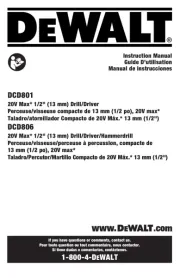
3 Augustus 2025
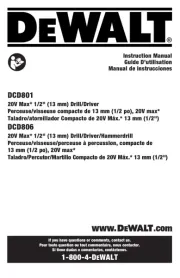
29 Juli 2025

4 Juli 2025
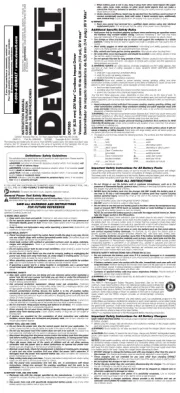
10 Juni 2025

2 Januari 2025

22 November 2024

15 November 2024

2 November 2024

23 September 2024

11 September 2024
Handleiding Boormachine
- Workzone
- Basetech
- Max
- Toolcraft
- Wolfcraft
- Gude
- Felisatti
- PHIOLENT
- Economy
- Trotec
- Kraftronic
- Handwerk
- Craftsman
- MSW
- Sparky
Nieuwste handleidingen voor Boormachine
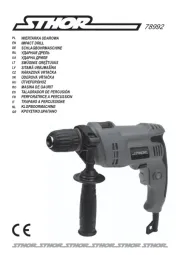
13 September 2025
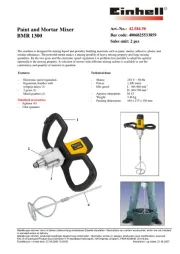
13 September 2025
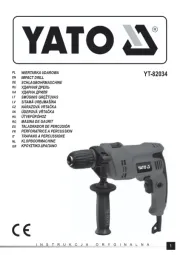
12 September 2025
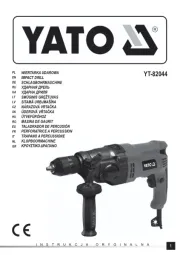
12 September 2025
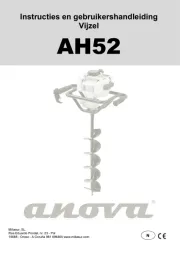
9 September 2025
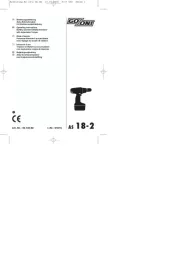
8 September 2025
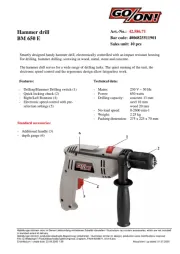
7 September 2025
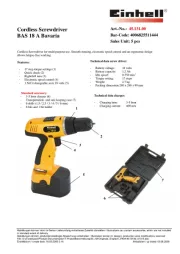
2 September 2025
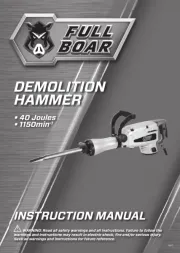
2 September 2025
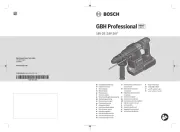
2 September 2025